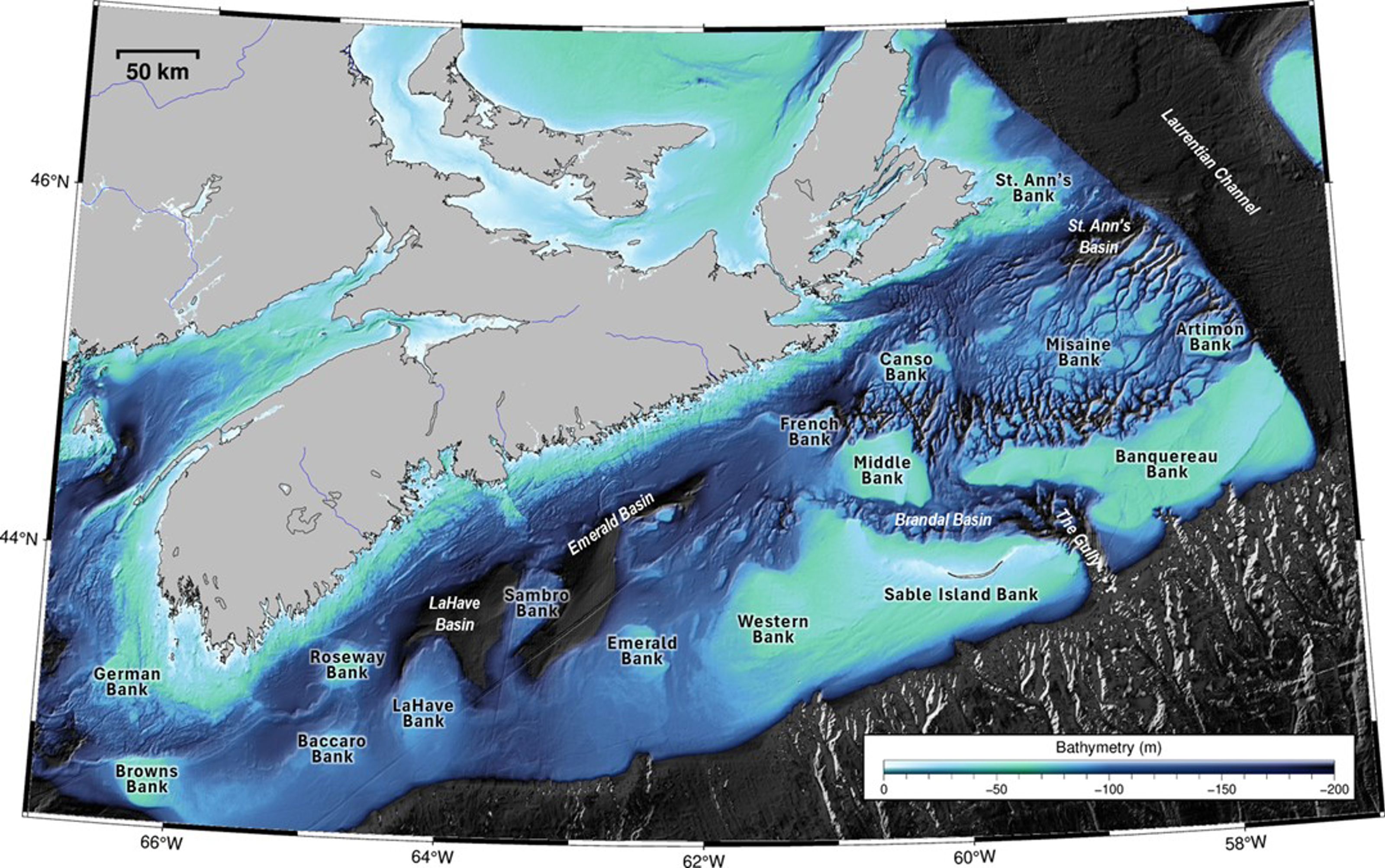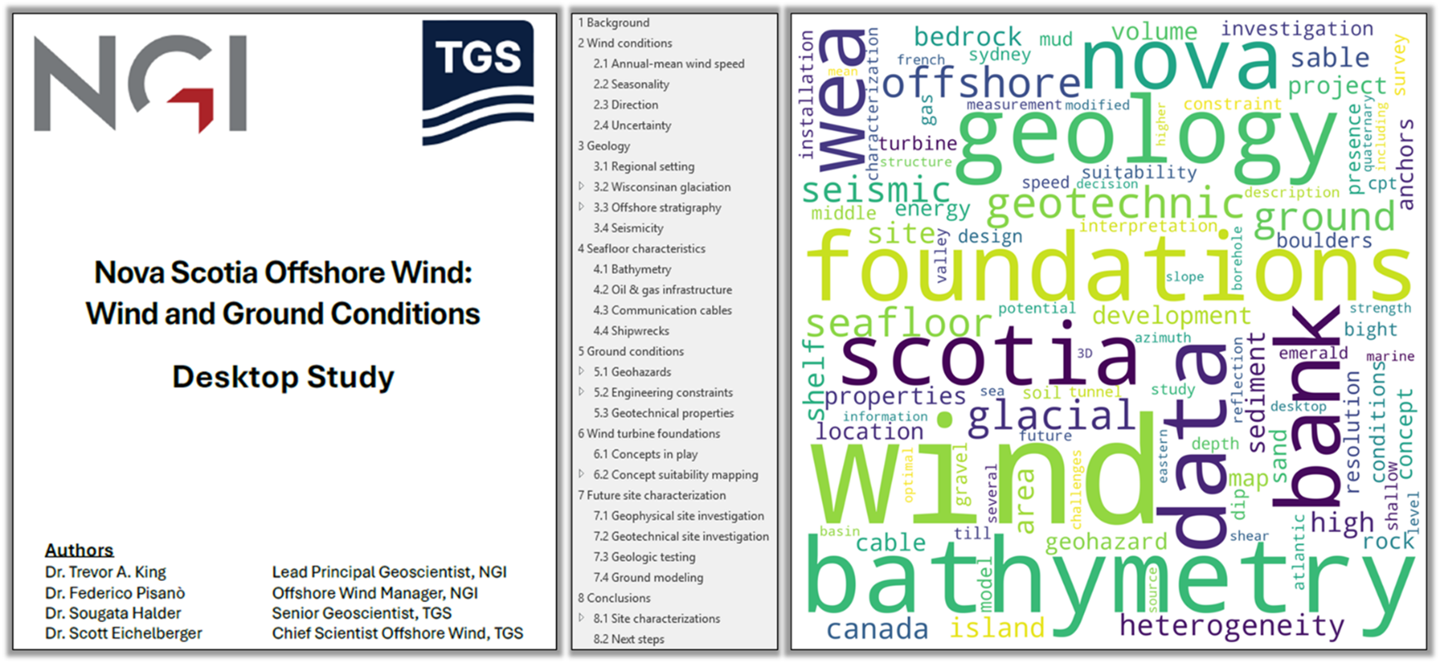NGI Collaborates with TGS to Provide a Desktop Study for Nova Scotia Offshore Wind
Our study includes a comprehensive review of available data and research, and integrates these to show the variability in wind resource and ground conditions across Wind Energy Areas. We highlight key considerations and risks, map the suitability of different foundation concepts, and make recommendations for future project site characterizations.

Bathymetry map showing the four WEAs for the planned 4Q 2025 licensing round.
Between 2007 and 2010, Nova Scotia committed to increasing energy efficiency, phasing out coal-fired power, and expanding wind energy. At that time, natural gas was flowing into Nova Scotia from the Sable Offshore and Deep Panuke projects, but unforeseen reservoir conditions prompted operators to cease production in 2018. Nova Scotia strengthened its commitment to offshore wind and, in 2022, set a target to offer licences for up to 5 GW of offshore wind power by 2030.
Natural Resources Canada looked across the Atlantic coast and identified eight areas offshore Nova Scotia as being favourable for initial development. From these, five “Wind Energy Areas” (WEAs) were proposed in March 2025 – our desktop study includes focused analysis for each of these, although one area was subsequently set aside for future licensing. The expectation is that several parcels within the final four WEAs will be available for bidding in Q4-2025.
In July 2025, the “Wind West” plan was announced that envisions 40 GW of Nova Scotia offshore wind and a transmission network supplying a significant portion of Canada’s energy demand. This is predicated on the success of Nova Scotia’s initial offshore wind projects and will ultimately require widespread development across banks and basins within and beyond the current WEAs

Geologic section across the inner Scotian Shelf (source: Geological Survey Canada).
The shallow geology is dominated by sediments and features left behind by the Laurentide Ice Sheet, which retreated from Nova Scotia around ten thousand years ago. The desktop study includes descriptions of seafloor characteristics (e.g., water depth, infrastructure), geology (e.g., seafloor sediments, sub-seafloor layering), geohazards (e.g., mobile bedforms, fluid expulsion), engineering constraints (e.g., bedrock, boulders) and geotechnical properties. These considerations form the basis for recommendations on foundation concept selection, future data acquisition and integrated ground modeling.

Report cover page, contents page and word cloud.
NGI and TGS are looking forward to more opportunities to collaborate with stakeholders across the value chain – including regulatory agencies, manufacturers, developers and local academic institutions – to help Nova Scotia meet its offshore wind targets.

